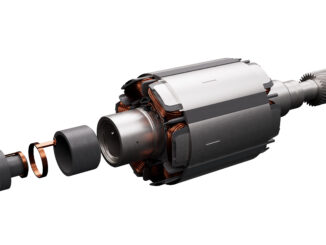By Ed Richardson, President – United States Magnetic Materials Association (USMMA)
The news in 2012 has been filled with topics relevant to the magnet industry. If you weren’t paying attention, you missed a lot of important information about the global magnet industry. Here’s a bit of a highlight reel:
China: Rare earth prices dropped dramatically during the past 12 months, with significant drops this past quarter. China cut production of rare earth elements at its mines, in an effort to bolster global prices, but prices continue to slide. The market dynamics just don’t support high rare earth prices. Supply is up and demand is down. Until this formula changes, rare earth prices will continue to be depressed.
Australia: Lynas continued on its quest to produce rare earths via its Australian mines and Malaysian processing plant, despite initial difficulties in getting production permits, an operating license was eventually granted and production seems imminent.
US: Molycorp trumpeted the acquisition of Neo Material Technologies, which included the Magnequench business, in March. Despite the revenues of this additional product line, Molycorp’s share price dropped below its IPO price of $14/share. After a heady run up to $76/share on April 28, 2011, Molycorp shares traded as low as $5.75/share on Nov. 15, 2012. It’s recovered a bit since, but it appears the stock price slide, coupled with an SEC investigation, cost Mark Smith his job as President and CEO. He resigned on Dec. 11.
Japan: Hitachi filed suit against unlicensed sintered neo magnets being sold in the US. This suit targeted large volume users, such as headphone and speaker manufacturers. Hitachi also pushed forward its plan to produce neo magnets in China Grove, NC. Hitachi appears to be answering unmet demand of the US auto industry, who want a “domestic” supplier of sintered NdFeB magnets, rather than being forced to rely on overseas suppliers. The launch date for this new plant is mid-2013, so stay tuned.
EU: The economy was stuck in a funk in 2012. They aren’t major suppliers of magnets in the global market, and their demand for magnets is weak, due to the economy.
With all of this going on, where do we go from here? If we apply a bit of game theory, we may not be able to conjure up a crystal clear picture of the future, but we can likely lay out some of the most probable outcomes. Here are my thoughts:
China: Rare earth prices continue to decline through 2013. There’s little on the horizon to push demand higher, and despite Chinese rare earth element production cuts, supply is relatively high, and getting higher. When I stop getting calls from people trying to dump inventories of rare earth elements, I’ll start to think that the bottom is near. That hasn’t happened yet. Speculators can certainly jump back into this game, but I don’t see it.
Australia: Lynas will get production going in Malaysia. Despite the protests, Lynas and Malaysia both need this plant to open. If it doesn’t, foreign investors will think twice about this emerging country. The Malaysian government won’t let that happen.
US: The stock market has spotted financial difficulties at Molycorp, and a new CEO won’t make these magically go away. Turnaround situations often mean asset sales. The question will be which assets are turned into cash? And if you figure out which one(s) to sell, who’s going to be buying rare earth assets today? It’s a tough market, but here’s a few ideas of buyers who could step up to the plate:
China: They tried to buy the Mountain Pass mine when UNOCAL owned it, and the Chinese already have dominant positions in the global market. Additional asset purchases would only enhance this position. However, this is nearly strategically impossible to imagine. No matter what it took, the US government wouldn’t let this happen. Despite this, can you imagine what fun the Chinese would have throwing a wrench into the US WTO case on Chinese rare earth export quotas and duties?
Japan: The Japanese government has been actively pursuing non-Chinese sources for rare earths. Assets in the US could be attractive to a number of Japanese companies that depend on rare earth elements, including Hitachi, ShinEtsu, Toyota, TDK and Honda. The Japanese government would make a very shrewd move if it was able to coordinate the purchase of a major chunk of the US rare earth supply chain.
US: Vulture investment groups could step in, but this would be a big bet with long odds. If this happened, it would likely be a fire sale, somewhat akin to a bankruptcy proceeding. Certainly the US government could step in and prop up the company, but I’m sure the Tea Party supporters would have a hard time swallowing this bitter pill, both inside and outside of Molycorp. Can you imagine the US government guaranteeing $1 billion in loans to Molycorp? Seems unlikely given the current political climate.
Close the Mine: Consider what would happen if Molycorp shuttered the Mountain Pass mine. In essence, the market would be left with the company formerly known as Neo Materials Technologies. That would equate to a reverse takeover of Molycorp where the acquirer was paid a premium to be bought, and ended up in the same position as when they started.
EU: Along for the ride at this point. They don’t supply rare earths, and demand is weak. Until they get their economic house in order, whatever that means, they won’t be a significant driver in the global magnet market.
I hope you join me at Magnetics 2013 in Orlando, FL on Feb. 7-8. As always, I’ll be interested in hearing what the industry thinks of recent developments.
 About the Author
About the Author
Ed Richardson is vice president of Thomas & Skinner, and president of the United States Magnetic Materials Association (USMMA). He has more than 18 years of experience in industrial manufacturing and business-to-business marketing. He has a B.A. from DePauw University, where he was a Management Fellow. He also has an M.B.A. from Indiana University’s Kelly School of Business. Mr. Richardson has written numerous articles on rare earth supplies and their impact on the US magnet industry. He has been quoted in an array of news publications and media outlets, including The New York Times, The Washington Post, The Wall Street Journal, US News and World Report, The Financial Times, Bloomberg Business Week and NPR.




2 Trackbacks / Pingbacks
Comments are closed.